|
|
|
|
|

|

|

|

|

|
|
Location
|
History
|
The Village
|
Churches & ...
|
Pictures
|
Tips/Infos
|
Links
|
Home
|
Contacts
|
Churches & Chapels
|

|
Most inhabitants of Greece are baptised members of the Greek-orthodox religion. Before
the “Chisma” (separation into western and eastern orders in 1054) this religion was part
of the Roman-catholic faith.
Today these two churches are very similar. When visiting monasteries or churches, you
should wear appropriate clothes (knees and shoulders covered)
|
|
| Bishop's church | |
For your information we have listed some religios translations:
Agia, Agios – holy, Saint (female.male)
Panegia or Theotokou – Virgin Mary
I. N. AΓ… Ieras Naos Agia, Agios – Holy Chapel Saint…(often found on signs)
Papas – priest (address: Papa and first name)
Yorti – name day (churches,chapels monasteries name day of the patron saint)
Monastiri – monastery, convent, nunnery
|

|
| Church of the 4 Martyrs |
Agia Paraskevi (Yorti 26.7.)
|

|
There are two churches in the village. The weekly service takes place every Sunday in the
“Agia Paraskevi “. The “Saint Paraskevi” was a nurse, who took care of the poor people.
She is the patron saint of the village who is supposed to help people who suffer from
eye-diseases. On icons she is mostly shown with a tray, on which you see a pair of eyes.
The construction of the church began in 1905 and was finished in 1920.
|
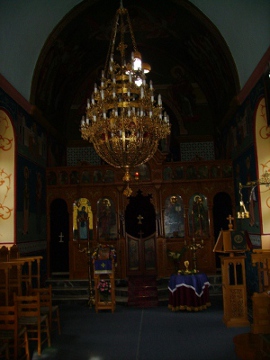 |
Isodia tis Theotokou (Yorti 21. 11)
|
 |
The second church in the village, “Isodia tis Theotokou” (entry [Mother of God] in
temple) is very old and originates supposedly from the 10th century. In the church you
can see two graves and very old icons, on some of which, during the Turkish occupation,
the eyes of the Saints have been scraped out
|
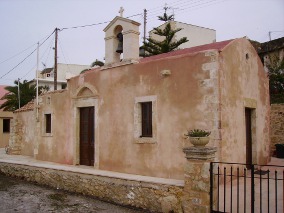
|
The Nunnery „Agia Irini“ (Yorti 5. 5)
|
|
On the Roussospiti-Rethimnon road, about 1,5 kilometres below the village, you can find
the nunnery “Agia Eirini”. In a cave a monk once lived in the 6th century. The first
buildings of the monastery were developed in the 10th century. In 1896, during the
Turkish occupation, it was burned down and totally destroyed. | |

|
| In 1989 two sisters started
the reconstruction of the nunnery. Today there are 6-7 sisters living “Agia Eirini”. The
reconstruction work is financed by donations and the selling of handicrafts (tablecloths,
hand painted icons, etc.), which are mostly produced in the nunnery. |
|
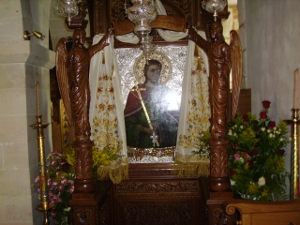 |
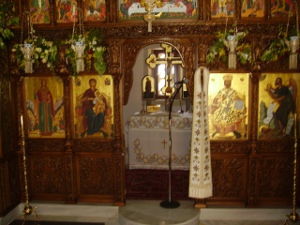 |
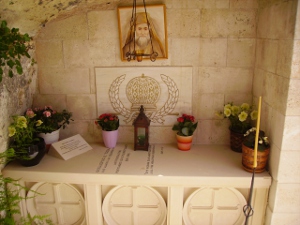 |
| Icon of Saint Irene | Chapel of Saint Irene, decorated for the "Yorti" | Grave of "Theodoros", a bishop of Rethymnon |
Opening times: 9.00a.m.-1.00p.m. and 4.00p.m. until sunset
Free entrance |
“I Kimisis tis Theotokou ” (Yorti 15.8)
|
 |
This church “Assumption of the Virgin Mary” is part of the nunnery “Agia Eirini” and is
managed by its sisters. It is situated on the road half way between Roussospiti and
Misiria. It origins are supposedly from the 15th century.
| 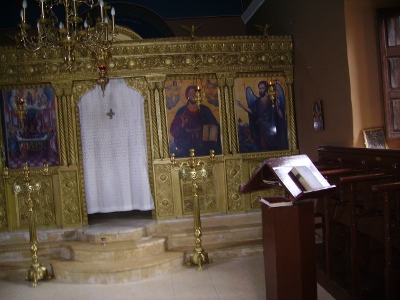 |
|
| 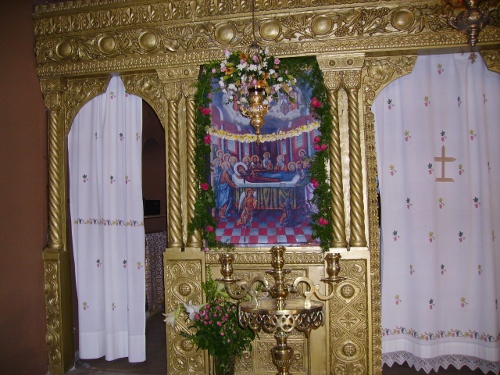 | |
| Celebration on 15th of August | |
"Prophet Elias" (Yorti July 20th)
|
|
If you drive from Retymnon to Roussospiti, on a hill on your right hand side, you can see
the chapel "Prophet Elias". It used to belong to the village but later became indepndent. |
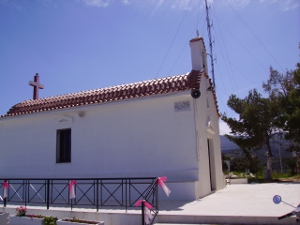 |
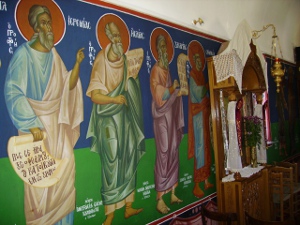 |
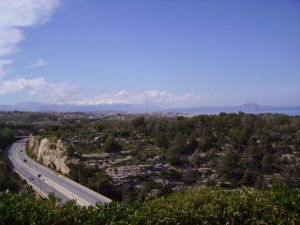 |
"Agios Georgos" (Yorti April 23rd & November 3rd)
|
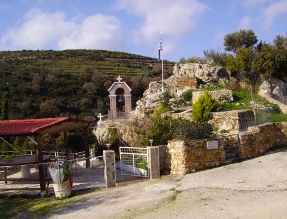
|
This chapel, built into the rock, is also called “Agios Georgeos, o
Methisti" (The drunken George), because on November 3rd, after the service, try the new
wine. Above the chapel you can see the former village-cemetery, which was working until
1952.
|
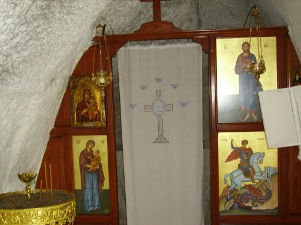
|
"Agios Antonios" (Yorti January 17th)
|
|
The chapel "Agios Antonios" is situated in a very beautiful valley; you can reach it on a
footpath down to Rethymnon.
|

|

|
"Agios Ounoufrios" (Yorti June 12th)
|
|
Close to the "Agios Antonios" is the chapel "Agios Ounoufrios. Both chapels are supposed
to have been constructed by the monks of the monastery "Agios Lucas". People say that in
the chapel (cave) used to live an hermit-monk.
|
"Agios Pnevmatos" (Yorti Whitsun, movable religious holiday)
|
|
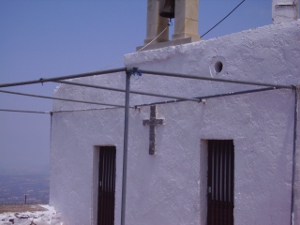 |
|
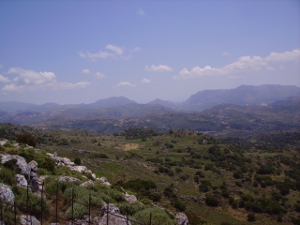 |
|
|
On the mountain "Vrissinas", 700 metres above sea level, you can find a chapel which is
consecrated to the Holy Ghost. From here you can enjoy the marvellous panorama. People
think, that in the ancient times there was a temple of the "Goddess Artemis". |
|
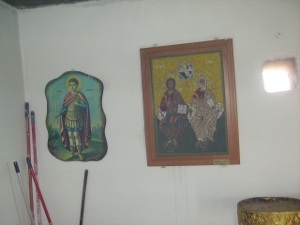 |
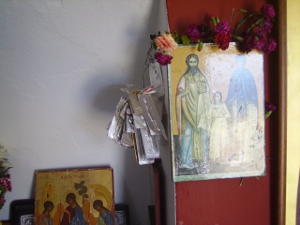 |
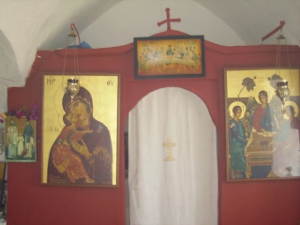 |
|
The works of reconstructing or decorating the described chapels and churches have mostly
been done, on a voluntary base, by the villagers.
|

























